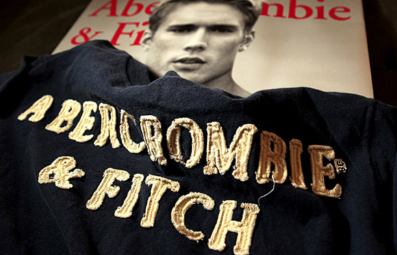The early 2000s were a pivotal time for fashion, marked by a blend of bold choices, nostalgic influences, and the rise of iconic brands. Among these brands, Abercrombie & Fitch (A&F) stood out as a defining force, shaping the sartorial landscape and the cultural zeitgeist of a generation. Known for its preppy aesthetic, provocative marketing, and exclusive retail experience, Abercrombie & Fitch became a symbol of the era. This blog explores the trends of the early 2000s and how A&F’s influence left an indelible mark on fashion.
Hallmarks of Early 2000s Fashion
The early 2000s fashion scene was a melting pot of various styles, characterized by:
1. Preppy and Casual Chic
Polo shirts, cargo pants, and denim jackets were staples, often paired to create a clean yet casual look that dominated school campuses and social scenes.
2. Low-Rise Jeans
A key trend of the era, low-rise jeans were worn by both men and women, often paired with fitted tops to highlight the silhouette.
3. Logo Mania
Brands prominently displayed their logos on clothing, signaling a shift towards visible brand loyalty and status symbol dressing.
4. Layering
The early 2000s saw the rise of layering, with camisoles over t-shirts, tank tops over long sleeves, and multiple accessories to complete the look.
5. Vintage and Distressed Denim
Vintage-inspired and distressed denim were highly popular, embodying a casual yet edgy aesthetic.
The Rise of Abercrombie & Fitch
Founded in 1892, Abercrombie & Fitch originally catered to outdoor enthusiasts. However, by the late 1990s and early 2000s, the brand had reinvented itself under CEO Mike Jeffries, targeting a younger demographic with a focus on casual, preppy attire and a distinct lifestyle image.
1. Provocative Marketing
A&F’s marketing strategy was bold and often controversial. The brand’s advertising campaigns featured scantily clad models in black-and-white photography, promoting a lifestyle of youthful exuberance and sexual allure. This approach generated significant buzz and attracted the attention of the brand’s target audience—teenagers and young adults.
2. The In-Store Experience
Abercrombie & Fitch stores were designed to offer a unique and immersive shopping experience. With dim lighting, loud music, and the brand’s signature scent wafting through the air, shopping at A&F was meant to feel like an exclusive event. The stores were often staffed by young, attractive employees, further emphasizing the brand’s aspirational image.
3. Exclusivity and Status
A&F cultivated a sense of exclusivity and status around its products. The brand’s clothing was often priced higher than its competitors, and the limited availability of certain items created a sense of urgency and desire. Wearing Abercrombie & Fitch became a status symbol, signifying a certain level of social standing and style.
Abercrombie’s Influence on Fashion
Abercrombie & Fitch’s influence on early 2000s fashion was profound, shaping trends and consumer behavior in several ways:
1. Popularizing Preppy and Casual Styles
A&F played a crucial role in popularizing the preppy, casual aesthetic that defined the era. Polo shirts, chinos, and rugby shirts became wardrobe essentials for many young people, thanks to Abercrombie’s influence.
2. Setting Trends with Signature Pieces
Signature pieces like distressed denim jeans, logo-emblazoned tees, and hoodies were staples in A&F’s collections. These items quickly became ubiquitous, copied by other brands and worn by millions.
3. Impacting Retail Practices
Abercrombie’s success in creating an immersive retail experience set a new standard for the industry. Many retailers began to focus on creating unique, branded environments in their stores, recognizing the importance of providing an experience, not just products.
4. Shaping Youth Culture
Beyond clothing, Abercrombie & Fitch influenced youth culture and lifestyle. The brand’s portrayal of an idealized, carefree youth resonated with many young people, shaping their aspirations and self-image.
Controversies and Challenges
Despite its success, Abercrombie & Fitch faced significant controversies and challenges. The brand’s marketing strategies and hiring practices were often criticized for promoting exclusion and lacking diversity. Lawsuits and public backlash eventually forced A&F to re-evaluate its approach, leading to a shift towards more inclusive and diverse representation in recent years.
The Legacy of Abercrombie & Fitch
While fashion trends have evolved since the early 2000s, the legacy of Abercrombie & Fitch remains. The brand has adapted to changing consumer preferences, incorporating more inclusive and diverse styles while maintaining its core identity. A&F’s influence is evident in the continued popularity of preppy, casual fashion and the enduring appeal of a curated retail experience.
The early 2000s were a vibrant and transformative period for fashion, defined by eclectic styles and bold choices. Abercrombie & Fitch emerged as a defining force during this time, shaping the fashion sensibilities and cultural landscape of a generation. By popularizing preppy, casual styles and creating an aspirational lifestyle brand, A&F left an indelible mark on the fashion industry. As we look back on the era, it’s clear that Abercrombie & Fitch’s influence continues to resonate, reminding us of the brand’s lasting impact and the iconic style it helped to create.







